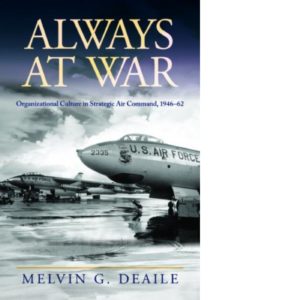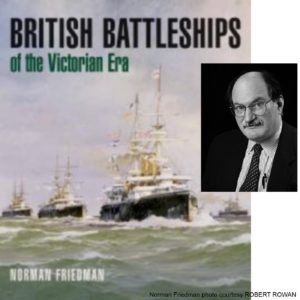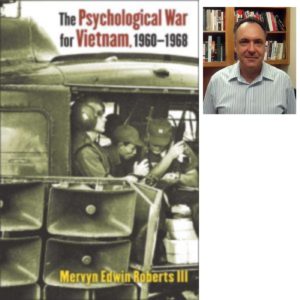Podcast: Play in new window | Download
Subscribe: RSS
 Dr. Mel Deaile attended the US Air Force Academy. He then became a bomber pilot and earned his PhD with the Air Force. He know teaches nuclear deterrence related subjects for the Air Force. He’s written a number of pieces and this is his latest book, Always at War about the Strategic Air Command.
Dr. Mel Deaile attended the US Air Force Academy. He then became a bomber pilot and earned his PhD with the Air Force. He know teaches nuclear deterrence related subjects for the Air Force. He’s written a number of pieces and this is his latest book, Always at War about the Strategic Air Command.
1:30 – Dr. Deaile talks about his early writing. He’s spent 26 years in the Air Force and is retired. During this time he did a master’s thesis on nuclear weapons. Then the Air Force had him get a PhD in the field.
3:30 – In 1984 he reported to the Air Force Academy. He graduated from pilot training in 1989 and then given a B-52. Later he joined Strategic Air Command.
4:36 – The book was focused on explaining what was unique about the SAC’s organizational structure. Curtis LeMay was the originator of much of what made SAC different. He took it over in October 1948 and stayed for almost 9 years. His experience came from being a bomber pilot in WWII. His charge was to create and run strategic level force of bombers carrying nuclear bombs. He decided to create a force that was always ready for war.
8:23 – Competition among his personnel was one way he kept them sharp. LeMay kept a totem pole that ranked all his wing commanders. He also used bomb competitions.
9:46 – Bomber generals tended to be people who led the Air Force. The path to higher level command went through SAC. However, LeMay was opposed to general training and preferred on the job flight training.
11:45 – SAC was stood up in 1946 to do independent strategic bombing. They were to be kept out of the hands of theater commanders. Twentieth Air Force was the first and was converted to SAC.
13:53 – The Soviet Union affected how SAC did its job. They didn’t send their best assets to the Korean War so that the Russians wouldn’t learn what SAC’s best assets were like. They also worried about a US fifth column that would sabotage US national assets, so LeMay created red cells to test base security.
16:40 – When the Soviet Union put up Sputnik, SAC had its first alert under General Thomas Power three days before Sputnik went up. Truman created the Atomic Energy Commission to hold atomic materials for nuclear weapons. Eisenhower transferred custody of the weapons back to the military.
19:16 – Several things happened in 1962 that affected SAC. The Cuban Missile Crisis was one. SAC reached its highest personnel level in 1962. It was a huge part of the Air Force. It’s also the last year that a bomber was built for the US for many years afterwards. Lastly, the US turned to more flexible responses in war.
22:32 – Dr. Deaile explains why SAC had two legs of the nuclear triad. Missiles didn’t perform as well as bombs. Missiles were inaccurate and couldn’t always be fired when needed.
29:24 – He did research at Maxwell Air Force base and used many of the oral histories they have. He used the National Archives in Maryland to look at Air Force administrative records. He also interviewed General Dougherty who had been in charge of SAC. He also attended SAC reunions.
32:26 – Survival training at the Air Force Academy came from programs started by General LeMay for his pilots and crews. Auto hobby shops on Air Force bases came from General LeMay who loved working on cars. Aero clubs on bases also came from LeMay. LeMay also started gun clubs since he enjoyed shooting. He also instituted the dorm system on bases to replace Army style barracks.
37:42 – Dr. Deaile’s favorite part of the research was talking to old SAC members. They really respected General LeMay. They also loved all things Boeing.
40:11 – Dr. Deaile was surprised by how much in SAC came from what General LeMay learned in WWII.
44:17 – SAC was a command created to form a deterrent force. This book should be able to educate us how to create and hone a deterrent force.
49:55 – Dr. Deaile explains his record setting 44.3 hour bombing mission after 9/11.
54:14 – The book can be pre-ordered through Amazon or Naval Institute Press. You can order a signed copy through facebook or linkedin. He will also be teaching advanced nuclear deterrence studies.
For more “Military History Inside Out – Serious history for the critical thinker” please follow me on Facebook at warscholar, on twitter at Warscholar, on youtube at warscholar1945 and on Instagram @crisalvarezswarscholar
Guests: Dr. Mel Deaile
Host: Cris Alvarez
Tags: US Air Force, air force, bombers, B-52, Strategic Air Command, General LeMay, nuclear deterrence, Sputnik, airmen, air force bases, nuclear triad

 Norman Friedman is a physicist and historian who has written extensively on naval matters especially the US and UK navies. I interviewed him about his latest book.
Norman Friedman is a physicist and historian who has written extensively on naval matters especially the US and UK navies. I interviewed him about his latest book.